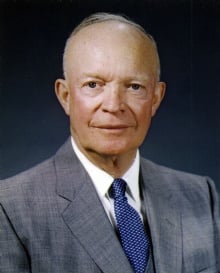Overview
Dwight D. Eisenhower’s memoir recounts the Allied campaign that toppled Nazi Germany, framed by the burdens of coalition leadership and the relentless demands of modern, industrial war. Writing as Supreme Allied Commander, he traces the path from the improvised beginnings in North Africa through the vast enterprise of Overlord and the final collapse of the Third Reich, emphasizing unity of command, logistics, air power, and the moral purpose that animated the Allied effort.
Forging the Alliance and Early Campaigns
The narrative begins with Operation Torch, the 1942 Allied landings in North Africa, where military objectives mingled with political dilemmas. Eisenhower describes negotiating with French authorities, the uneasy arrangements with Darlan and Giraud, and the urgent need to knit together British and American forces into an effective team. Hard fighting in Tunisia yielded painful lessons in combined arms, coordination, and the necessity of air supremacy. Sicily and the initial stages in Italy followed, showcasing rising American competence, Montgomery and Patton’s parallel drives, and the persistent friction of coalition warfare. Throughout, Eisenhower anchors tactical episodes to strategic debates: the Allies had to keep pressure in the Mediterranean without allowing it to derail the paramount goal of a cross-Channel invasion.
Preparing Overlord
Appointed to lead SHAEF, Eisenhower shifts to the vast preparation for D-Day. He details the delicate balance among the Combined Chiefs of Staff, the competition for landing craft, and the insistence on mass and timing. Deception operations, resistance networks, and the battering air offensive underpin the plan to isolate Normandy. He recalls the agonizing weather decision of June 5–6, 1944, taken on a narrow forecast window. The landings achieved a foothold at terrible cost, but the struggle truly began in the bocage, where hedgerows blunted armor and stretched nerves. He credits the accumulating weight of logistics, tactical adaptation, and relentless air support with turning the lodgment into a springboard.
Breakout, Strategy, and Command
Operation Cobra shattered the German line and opened France. Eisenhower narrates the rush across the country, the imperfect closure of the Falaise pocket, and the pounding tempo that strained supply. He highlights the Red Ball Express and the urgent imperative to open Antwerp, a logistical decision that rivaled any battlefield gamble. Montgomery’s Market Garden, approved as a bold stroke to end the war early, failed to seize the final bridge; Ike presents it as a calculated risk with costly lessons. The central strategic controversy, single thrust versus broad front, runs through this section. Eisenhower defends the broad-front approach as the surest way to break a resilient enemy, protect flanks, and exploit Allied strength, even as he manages assertive subordinates in Montgomery, Bradley, and Patton and navigates political sensitivities with Churchill, Roosevelt, and de Gaulle.
Winter Crisis and Final Victory
The Ardennes counteroffensive tests Allied cohesion. Eisenhower describes accepting the shock, reshuffling boundaries to place Montgomery over the northern armies, and waiting for weather to free Allied air power. Once the bulge is contained, the Allies cross the Rhine, at Remagen by luck and at Wesel by design, and encircle the Ruhr, crushing Germany’s remaining industrial heart. He explains halting at the Elbe and not racing for Berlin as a decision rooted in casualty estimates, logistical prudence, and prior inter-Allied agreements. The liberation of concentration camps confronts commanders and troops with the war’s moral stakes. German surrender follows at Reims and Berlin, and Eisenhower turns to occupation, denazification, and the care of millions of displaced persons.
Reflections and Legacy
Eisenhower closes by crediting victory to Allied teamwork, overwhelming logistics, and decisive control of the air. He stresses that command meant harmonizing national interests, channeling strong personalities toward a common purpose, and resisting temptations to seek glory through reckless thrusts. The book stands as a record of decisions made under pressure and an argument for disciplined coalition strategy bound to a clear political end: the destruction of Nazi tyranny and the restoration of a durable peace.
Crusade in Europe
Crusade in Europe is the memoir of Dwight D. Eisenhower, recounting his experiences and involvement in World War II as the Supreme Commander of the Allied forces. The book covers the events leading up to the war, Eisenhower's role in securing victory, and his eventual appointment as the Chief of Staff of the US Army.
Author: Dwight D. Eisenhower
 Explore the life, leadership, and accomplishments of Dwight D Eisenhower, with detailed biography and famous quotes.
Explore the life, leadership, and accomplishments of Dwight D Eisenhower, with detailed biography and famous quotes.
More about Dwight D. Eisenhower
 Explore the life, leadership, and accomplishments of Dwight D Eisenhower, with detailed biography and famous quotes.
Explore the life, leadership, and accomplishments of Dwight D Eisenhower, with detailed biography and famous quotes.